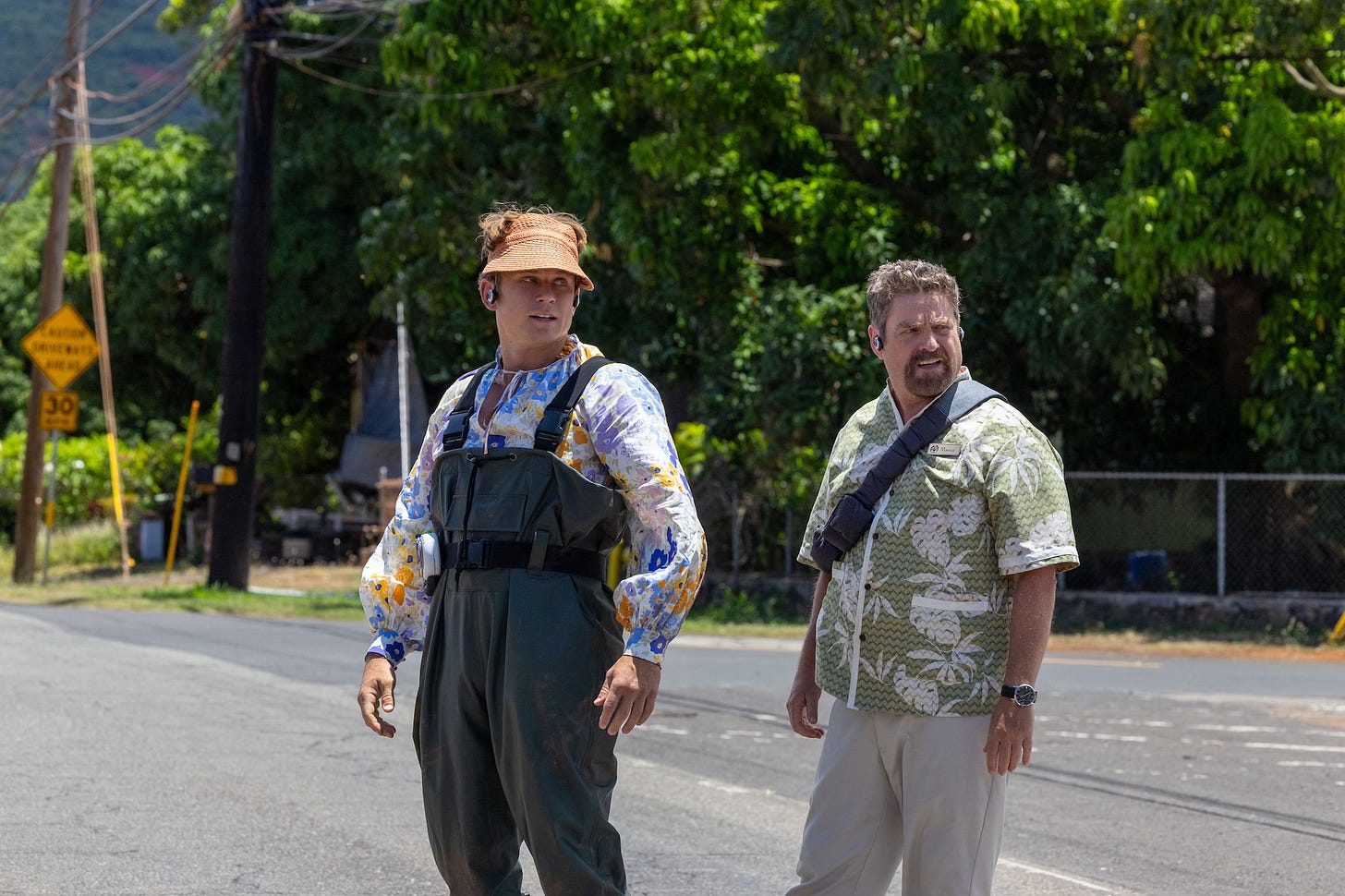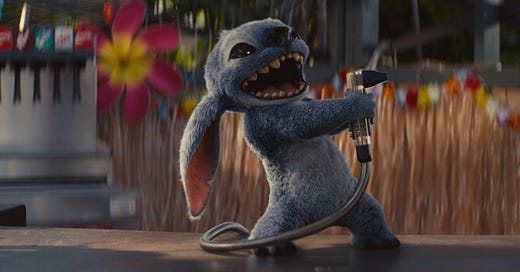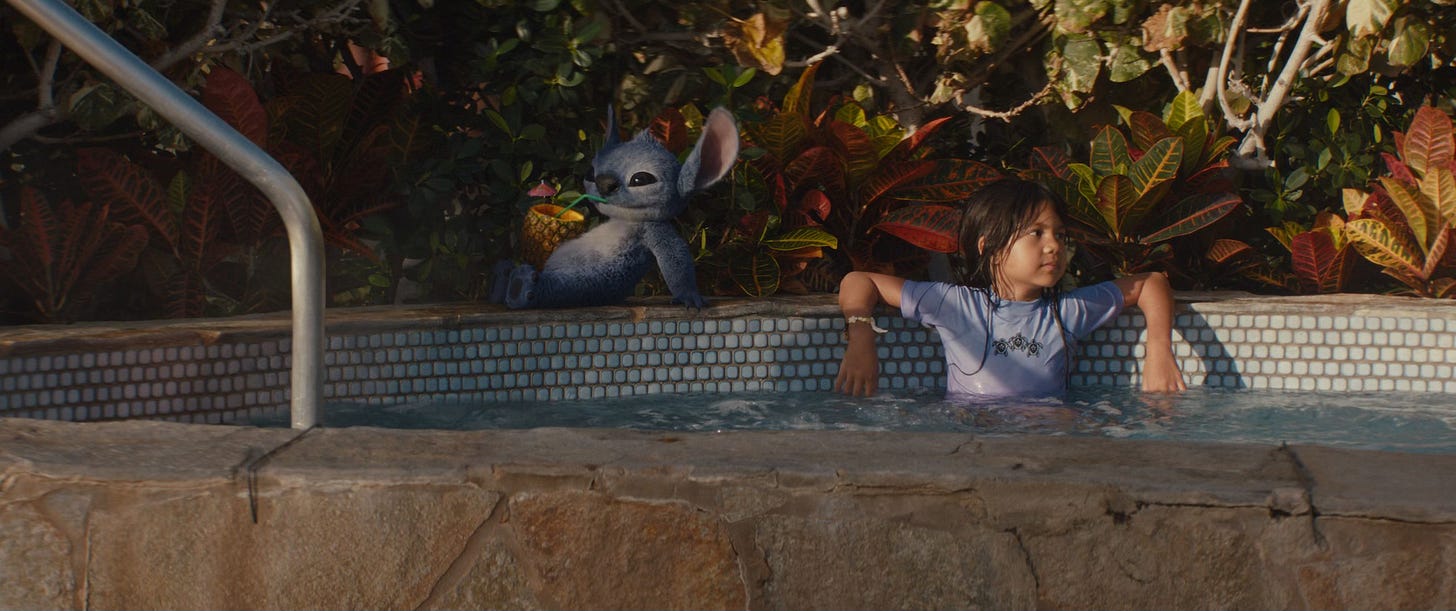'Lilo & Stitch' Is the Rare Live-Action Remake That Feels Real
Disney's new version retains much of the heart and humor of the original.
To call Disney’s recent spate of remakes “live-action” is a bit of a misnomer. The Lion King and Mufasa: The Lion King are just as animated as the 1994 original; they simply opt for photo-realistic animation instead of hand-drawn animation. Even the remakes with humans still feel largely animated, with sets constructed in VFX departments and loads of CGI characters. As I settled into the latest remake, Lilo & Stitch, I was worried I would get more of the same, especially as the film begins like the 2002 animated original with a big galactic council meeting filled with (now-CGI) alien races. Thankfully, the film quickly arrives on Earth, and, more importantly, on physical sets in a contemporary location. By mostly leaving the CGI gimmickry aside, the new Lilo & Stitch rests more on the charming heart and humanity of its characters rather than trying to dazzle the audience with expensive spectacle.
“626” (Chris Sanders) is the chaotic experiment of mad scientist Dr. Jumba Jookiba (Zach Galifianakis), and the galactic council decrees that the experiment be exiled. Before the order can be carried out, 626 steals a spaceship and crash-lands on a small Hawaiian island. There, he meets Lilo (Maia Kealoha), a precocious and rambunctious 6-year-old now in the care of her older sister Nani (Sydney Elizebeth Agudong) since the recent death of their parents. Stitch disguises himself as a dog (poorly) and gets adopted by Lilo to hide from Jookiba and his partner Agent Pleakley (Billy Magnussen), who are now disguised as humans and on a mission from the council to recover 626. The creature, dubbed “Stitch” by Lilo, still creates a path of destruction, but slowly finds himself caring for Lilo while Nani tries to hold everything together before family services assign Lilo to a new home.
This is largely the plot of the original, and in other Disney movies, this approach leaves the lingering question of, “Why bother?” In Lilo & Stitch, while the original remains superior, at least here we get the joy of seeing actors act against other actors. This may seem a low bar, but it’s surprising how much better the material works when you don’t have loads of VFX competing with each other. Stitch is the main CGI character, and the movie lets him play off the endearing Maia Kealoha so that we have an emotional bond at the center of the movie. The filmmakers then wisely find a way to do fewer VFX by making Jookiba and Pleakley “humans.” Part of that is a concession to the live-action setting (in the original, the two aliens dress, unconvincingly, as humans, which wouldn’t translate here), but part of it is letting actors like Galifianakis and Magnussen employ their comic talents rather than only using them for their voices. Lilo & Stitch appreciates its human actors rather than minimizing them in service to a grand production.

The smaller scale also works to emphasize the emotional stakes. Live-action remakes like Beauty and the Beast, Aladdin, and The Little Mermaid all feel like they’re trying to solve the challenge of bringing a big hand-drawn world into a CGI space, and then the size of the production overwhelms the actors. But Lilo & Stitch is, except for the prologue, in a small town in Hawaii, and that grounds the action far more than expensive recreations of Agrabah or Beast’s Castle. From there, it’s much easier to buy into a story about the importance of family, even though there’s a fuzzy blue alien in the middle of the action.
While it would be a bit of a stretch to call this remake “necessary,” it at least never feels completely misguided. It does continue the error of adding more “stuff” that rarely benefits the story (splitting the child protective services agent, Cobra Bubbles, into two with Cobra (Courtney B. Vance) now a CIA agent and the CPS agent a social worker played by Tia Carrere, seems well-intentioned to make social workers non-threatening, but doesn’t help the overall narrative), and yet there’s nothing particularly egregious. The film leaning a bit more into the loss of Lilo and Nani’s parents and what Nani wants out of life isn’t necessary, but nor is it a hindrance to the central theme of a reconstructed family.
Most importantly, the film always hits its central target of showing the bond between Lilo and Stitch. Kealoha is perfectly cast, and director Dean Fleischer Camp easily conveys how the two title characters are kindred spirits. They create a lot of mischief, but that doesn’t make them “bad,” and they’re both incredibly adorable. And more than what hundreds of millions of dollars in production costs can buy, simply nailing that main relationship goes much further than painstakingly recreating a movie that already worked. It’s a lesson that comes far too late for Disney, but at least audiences can go into Lilo & Stitch and expect the same warmth and charm of the original.









